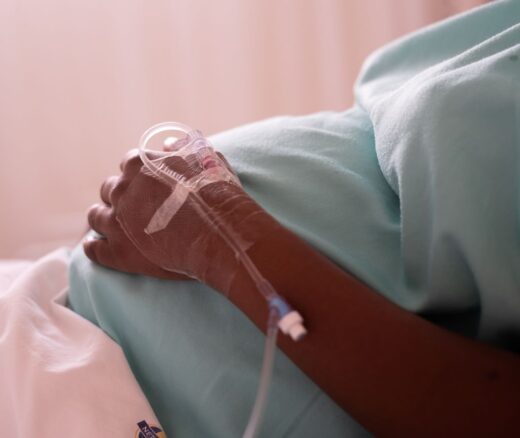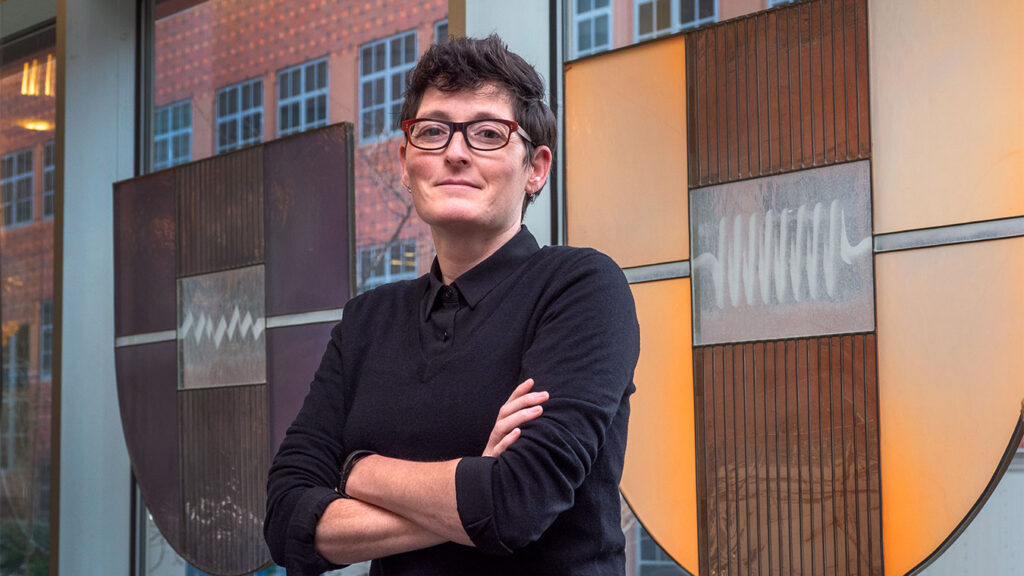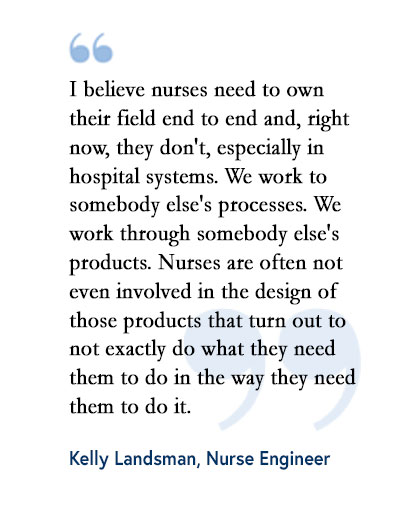
Over 500 U.S. Hospitals Have Stopped Delivering Babies Since 2010
A Crisis in Maternal Care is Unfolding—and it’s Hitting Rural and Urban Communities Alike
News

While issues of staffing adequacy, administrative policy, clinical practices, and collegial behavior are well known elements in the long-running “nursing environment” debate, there’s a growing sentiment that nurses should also be more directly involved in the innovation and engineering aspects of their work spaces and equipment.
“One of the biggest frustrations for hospital nurses occurs when new equipment or systems are installed,” said LDI Associate Fellow Marion Leary, MSN, MPH, RN. “Then, when you start working with those hour by hour, you find they’re missing elements and functions that would make them easier and more effective for nurses to use. This is because the ‘invisible knowledge’ and insights of nurses weren’t included in the product’s design phase.”
Making more effective use of that “invisible knowledge” has been a major quest for Leary in the three years since she became the University of Pennsylvania School of Nursing’s first Director of Innovation.
A former critical care nurse, Leary is now focused daily on issues of design, technology, and the need to infuse nursing with a new sense of its innovation and engineering potential. In that spirit, she organized and moderated the Nursing School’s recent “The Need for Nursing Engineers” colloquium. That event’s four panelists were health care professionals from across the country who have taken it on themselves to become both nurses and bioengineers. That puts them in a tiny, but growing vanguard of a “nurse engineer” academic discipline that has yet to be officially recognized.

“I’ve worked with engineers on new products and tried to give them feedback on how a thing would or wouldn’t work in a clinical setting. Many of us have,” said Leary. “But that just doesn’t replace being the clinician with the actual nuanced experience who also has the engineering training to design the product from the start.”
“We wanted the colloquium to cover as much of the gamut as possible of ways nurses could be interacting in the engineering space and thinking about their own potential as innovators,” continued Leary. “The goal was to show how you could pair the two disciplines of nursing and engineering, and underscore the importance of having nurses with both competencies in this age of very rapid health care change and innovation.”
One point of strong consensus was that nurses touch on more products and are engaged in more service delivery processes than any one else in the system, which makes them uniquely capable of identifying everyday issues that impact workflow across every setting in which patient care is delivered.
But another point was that, as a result of their traditional training and the current state of health care delivery culture, nurses rarely see themselves as innovators.
“Nurses generally don’t think that way,” said colloquium panelist Karen Giuliano, PhD, RN, MBA, FAAN, and Associate Professor at the University of Massachusetts, Amherst College of Nursing. “But step back and look at the real-world situation in the nursing environment. There’s not a single nurse on the planet who doesn’t use at least one workaround — and probably more — every day. That is the raw material of innovation that we need to tap and turn into products and services we can widely disseminate to improve efficiency and patient care.”
Another panelist, Kelly Landsman , BME, RN, PHN, MN, explained she was a biomedical engineer for 13 years, but was frustrated with the feeling that “we never quite got to the right solutions” in health care products. She went back to school for nursing, got her Master’s degree in 2020, and is now a registered nurse on an adult inpatient cardiology unit. She is also an Innovation Fellow at the University of Minnesota Medical Devices Center. Turned into an advocate by her own experiences, Landsman in 2019 launched NurseEngineer.com — a website as well as a determined vision.
“I believe nurses need to own their field end to end and, right now, they don’t, especially in hospital systems,” said Landsman. “We work to somebody else’s processes. We work through somebody else’s products. Nurses are often not even involved in the design of those products that turn out to not exactly do what they need them to do in the way they need them to do it.”
Leary concurred. “I interact with so many nurses who have all these ideas for fixing problems they encounter at the bedside every day, but they don’t have the technical skills to tangibly create those solutions. That’s why it would be so useful to have some nurses who are also trained as engineers.”
Leary, who joined Penn in 2006, was a nurse at the Hospital of the University of Pennsylvania and a resuscitation science researcher before becoming more involved with innovation as the Director of Innovation at Penn Nursing and through the Society of Nurse Scientists, Innovators, Entrepreneurs & Leaders (SONSIEL), where she’s currently a board member.
“I’ve always been fascinated with engineering and technology,” said Leary. “I’ve had a number of grants looking at how we could use technology, such as virtual and augmented reality, to improve training for lay responders and health care professionals. Getting involved in nurse-led hackathons is how I became integrated into the innovation community in a way I hadn’t before.”
And, indeed, in 2017, Leary was named “Geek of the Year” in a Philadelphia regional STEM innovation awards program. Since then, she’s been named an “Influencer of Healthcare” winner in the Philadelphia Inquirer’s Excellence in Innovation program, and one of the “30 Healthcare IT Influencers to Follow in 2021” in HealthTech magazine.
The Penn Nursing innovation program Leary oversees now includes the Innovation in Health: Foundations of Design Thinking course taught by her, the Design Thinking for Health educational website created in partnership with the Rita and Alex Hillman Foundation, and an annual Innovation Accelerator competition that awards the winning nurse-led team $10,000 to research and develop their idea along with mentorship and education. A newly announced affiliate program brings together Penn Nursing and Penn Engineering students and faculty in an initiative called the Community Collaboratory for Co-Creation. Co-led by a professor from each school, the program will fund pilot grants for health equity and justice research projects that engage the local community, define some of its most pressing health-related challenges, and design potential solutions.
Those initiatives place Penn Nursing in a small circle of other universities that have, or are developing, cross-curriculum opportunities with their nursing and engineering schools. In much the same way that Penn addressed the rapidly increasing complexity of health care financing and administration by bringing together its medical and business schools in a joint MD/MBA program, these institutions are addressing the rapidly increasing technological complexity of health care delivery by doing the same thing with nursing and engineering.
At least four other schools today — the University of Massachusetts Amherst, Florida Atlantic University in Boca Raton, Duquesne University in Pittsburgh, and Johns Hopkins University in Baltimore — are doing this with new MBE/MSN programs or other approaches. Much like the term “nurse engineer,” the new academic trend of merging nursing and bioengineering training doesn’t yet have a standard model, even though those doing it intend to produce nurse engineers.
The term “nurse engineer” was coined in a 2015 paper written by William Eisenhauer, M.Eng, and published in Industrial Engineer, titled “The Time has Come for Nursing Engineers.”
That paper came out into a health care clinical environment being rapidly revolutionized by electronic medical records, all-encompassing digital communications networks, telemedicine, mobile wearables, virtual reality, computer simulations, robots, diagnostic monitoring, and therapeutic devices driven by ever-more sophisticated artificial intelligence systems. Even pieces of furniture — like the mundane hospital bed — were morphing into heavily computerized electro-mechanical environments rich in biometric sensors, alarms, automated responses, and novel communications capabilities.
That 2018 Nursing Scholarship paper suggested that “important patient care improvement opportunities are missed when nurses are not actively engaged in patient care device innovation and creation. Innovative nurse and engineer collaborations are needed in various forms to leverage nurse ingenuity and create patient care innovations.”
Earlier this year, a lengthy scoping review paper published in the International Journal of Nursing Studies reported: “Our results revealed that nurses and engineers are now relatively independent because they rarely master each other’s knowledge and skills. There is a long way to go in interdisciplinary collaborations between nursing and engineering.”
A “scoping review” is an effort to pull together, analyze, and synthesize literature on a topic — often an emerging one — that has not been previously comprehensively reviewed. This 2021 review concluded: “There is an urgent need to develop interprofessional education, strengthen nursing connections with the health care engineering industry, and provide more platforms and resources to bring nursing and the engineering disciplines together.”


A Crisis in Maternal Care is Unfolding—and it’s Hitting Rural and Urban Communities Alike

Stable Payments Improved Margins But Not Liquidity, New LDI Analysis Finds

LDI Senior Fellow Cited for “Significant Contributions” in Research

Outdated Laws Target Black and Queer Lives in Over 30 States, Fueling a Deadly Disease

Selected for Current and Future Research in the Science of Amputee Care

Research Memo: Delivered to House Speaker Mike Johnson and Majority Leader John Thune

Research Memo: Delivered to House Speaker Mike Johnson and Majority Leader John Thune

Hospitals’ Current Cost Reports are Unreliable and Should be Improved, LDI Fellow Finds